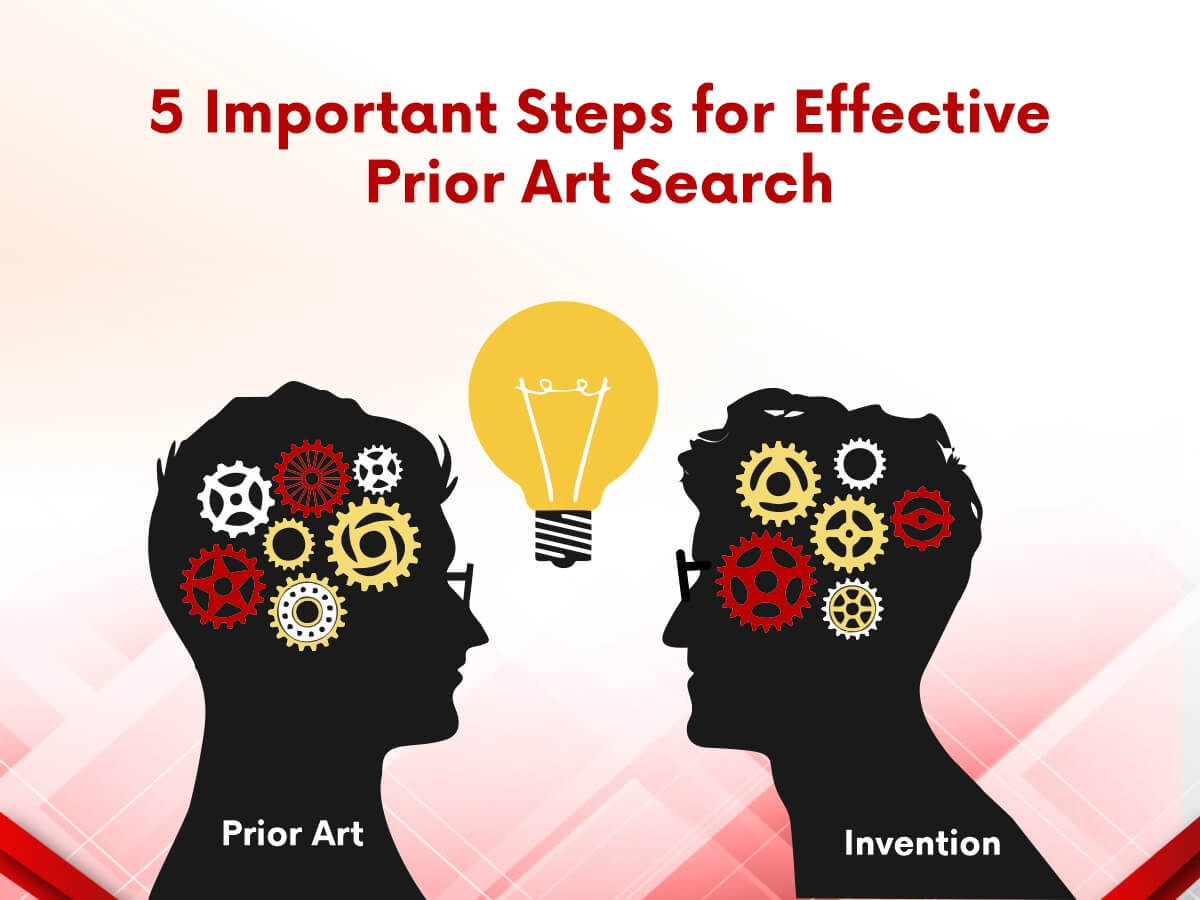
Close


If you’re an inventor who is looking to understand everything about prior art search or seeking patent protection, you’ve landed on the right page. By the time you’ll finish reading this blog, you’ll have a good idea of what can be included in the prior art and how you can utilize that knowledge to perform your own patent search and avoid wasting time and money on the non-patentable subject matter. It covers everything about prior art searches and why these searches are valuable for inventors.
Any scientific and technical information that existed before your invention is referred to as prior art. It might be anything from a journal article to a technical publication, newspaper article to a product information brochure, press release to a marketing brochure, magazine, book, or patent.
The criteria of novelty and non-obviousness must be met for an invention to be patented. A prior art search is conducted to determine whether an invention is novel, non-obvious, or not. A Prior Art Search looks for products, inventions, and concepts that are comparable to the ones you’re seeking to patent or manufacture.
Prior art refers to an invention that was comparable to yours and also existed before yours. If you have an invention idea or have already made an invention, you must do a prior art search. Any inventions that are identical to yours will be found using the prior art search. Examiners of patent applications frequently reject applications because the idea is already covered in the prior art.
Begin by drafting a list of keywords that best describe your invention.
Conduct a thorough search, with all possible keyword combinations that could exist in the prior art.
To kickstart your search, we recommend using the following patent search tools:

For a more comprehensive search, go beyond Patent Databases and include the following sources in your invention’s domain:
For scholarly publications, use Google Scholar, IEEE, Science direct, etc.
Product search on YouTube, Flipkart, Amazon, or other e-commerce sites.
Make a list of all relevant results and save it. This will fulfill your ethical duties of disclosure to report prior art to the patent office. You should include all relevant previous art when filing your patent application. You will end up with a stronger patent if the patent examiner has all of the relevant references at his disposal.
A prior art search will reveal any prior knowledge that existed prior to the innovation in consideration. Patent applications, scientific thesis, and industrial know-how are instances of information. An inventor will have a clear idea of how original and non-obvious their innovation is, once they have this knowledge. Later, the inventor can rework his idea and patent application to enable the innovation to be granted a patent. As a result, a prior art search will enable us to identify what is already known (prior art) and what is new (invention).
The findings of a prior art search can also be used by an inventor to understand the current state of the art in his field of research, which is a secondary benefit. This will provide direction on how the future scope of research might be established.
Prove your idea is novel and original
Understand how your idea fits into the technological realm.
Look out for people who might attempt to steal your idea in the future
Take a lookout for patents that you can unknowingly infringe on if you make and sell your invention.
Identify how strong is your idea.
There are four types of prior art searches: Patentability, validity, FTO, and landscape searches.
Prior art revealed through a patentability search can help you to come up with new ways to make your idea truly unique and help you with your invention. Analyzing what already exists will assist you in making your invention unique.
If you wish to get a patent, you must first determine whether your invention qualifies as patentable. It should be:
Unique
Useful
Non-Obvious
You do a validity search to see if prior art existed at the time the patent application was filed. This is frequently done to demonstrate that a competitor’s patent is invalid and should be revoked.
Patents that may restrict you from commercially producing or selling your product are identified through clearance searches. When you sell your product, you want to be sure you don’t infringe on someone else’s rights. This sort of search is normally performed in the country (jurisdiction) where you intend to market your idea.
If you want to market your product, freedom-to-operate searches are essential. It is a legal analysis that compares your product to a suitable set of patents in order to identify the level of risk associated with bringing the product to market. This search can assist you in avoiding any infringement risks while launching your product.
In this type of search, the term landscape refers to a technological field. You conduct a landscape search to identify trends, determine the number of patents being filed, learn what your competitors are up to, and stay updated in a technological field.
Doing a prior art search all by yourself may sound appealing, but it has its own set of cons. Because the search necessitates skills, training, and practice, it can never be asserted with certainty that no prior art was missed. Any prior art if overlooked may result in the patent application being rejected or the awarded patent being terminated at a later date. Hence, it becomes paramount that the task is assigned to experts who know their way in business. If an inventor wants to perform prior art searches before seeking patent protection, we got your back. Wissen Research Patentability Search service provides the relevant prior art at the right time.
Please Subscribe our news letter and get update.
© Copyright 2023 – Wissen Research All Rights Reserved.
Powered by VintageCoders